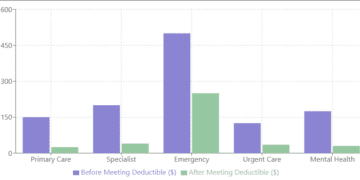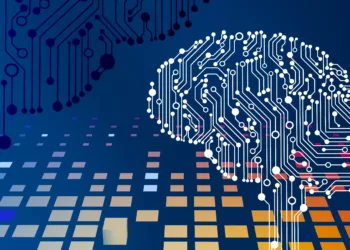In recent years, artificial intelligence (AI) has been the subject of immense hype, promising to revolutionize industries, enhance productivity, and even reshape the global economy. The optimism surrounding AI has attracted billions of dollars in investments, with some analysts predicting transformative changes in the coming decade. However, a closer examination reveals a more nuanced picture, one where the potential of AI may be overestimated, and the financial risks underappreciated.
The Optimistic Predictions
The promise of AI is staggering. Goldman Sachs, one of the world’s leading financial institutions, has forecasted that AI could boost the global GDP by up to 7% in the next ten years, adding an astonishing $7 trillion to the world economy. McKinsey & Company, another prominent consulting firm, is even more bullish, suggesting that generative AI could contribute between $2.6 and $4.4 trillion to the global economy annually. These numbers are nothing short of eye-popping, and they have fueled a wave of investments into AI startups and technologies.
But is this optimism justified?
The Reality Check
Despite the rosy projections, the reality of AI’s economic impact is far more complex. As Sabine Hossenfelder discussed in her YouTube video titled “AI Hype: ‘Billions of dollars will be incinerated’ Business Analysts Warn”, several business insiders are sounding the alarm. They argue that the current AI boom is more of a bubble than a sustainable revolution.
Limited Revenue Streams
One of the most glaring issues is the lack of substantial revenue from AI services. While companies like OpenAI, the creator of ChatGPT, have managed to generate significant income, with OpenAI reportedly reaching $2 billion, these success stories are the exception rather than the rule. Other companies, such as Anthropic, the developer behind Claude, are also seeing revenues in the hundreds of millions, but these figures pale in comparison to the capital being invested.
For many other AI startups, the path to profitability is far from clear. The majority of these companies are struggling to monetize their technologies, and the revenues they do generate often do not justify the massive upfront costs involved in developing and maintaining AI systems.
The Cost of AI Infrastructure
The high cost of AI infrastructure is another critical factor. Jim Covello, Head of Global Equity Research at Goldman Sachs, has expressed concern over the substantial expenses associated with building and running AI technologies. He estimates that the AI infrastructure buildout could cost over $1 trillion in the coming years. This raises a crucial question: What trillion-dollar problem will AI solve to justify such an investment?
Covello’s point is particularly relevant when considering that many of the tasks AI is designed to automate can be performed by low-wage workers at a fraction of the cost. If AI cannot offer a significantly cheaper or more efficient solution, its widespread adoption may be limited.
AI’s Economic Impact: A Sobering Perspective
To further understand the economic implications of AI, it’s essential to consider the research of Daron Acemoglu, a renowned economist from MIT. In his recent paper, Acemoglu reevaluates the impact of AI on the U.S. economy and offers a much more conservative estimate than the one provided by AI optimists.
Jobs and Labor Market Disruption
One of the key assumptions driving AI optimism is that the technology will replace a significant portion of human labor, leading to cost savings and productivity gains. However, Acemoglu argues that this assumption is flawed. According to his research, only about 20% of all labor can potentially be replaced by AI. Of this, only a quarter (approximately 5% of total labor) will actually be replaced, resulting in modest savings of about 27%.
This limited impact on labor markets suggests that the overall GDP boost from AI will be far lower than initially expected. Acemoglu estimates that the GDP impact could be as low as 1%, a far cry from the 4-7% predicted by other analysts.
| Labor Market Impact | Optimistic Projections | Acemoglu’s Estimate |
|---|---|---|
| Percentage of Jobs Replaced by AI | 20% | 5% |
| Savings from AI Adoption | 27% | Modest |
| GDP Impact | 4-7% | 1% |
The AI Investment Dilemma
The divergence between optimistic projections and sobering reality has significant implications for investors. David Cahn from Sequoia Capital recently published an essay titled “AI’s 600 Billion Dollar Question,” where he highlights the growing disconnect between the expected revenue from AI infrastructure and the actual revenue growth in the AI ecosystem.
Cahn argues that many AI startups face a long and uncertain road to profitability. The gap between the costs of AI development and the revenue generated could lead to substantial financial losses. This sentiment is echoed by Kia Kokalitcheva from Axios, who warns that billions of dollars in capital are almost certain to be “incinerated” as AI investments fail to deliver the expected returns.
| Investment Challenges in AI | Optimistic View | Skeptical View |
|---|---|---|
| Revenue Expectations | High | Overestimated |
| Time to Profitability | Short | Long |
| Capital at Risk | Moderate | High |
The AI Landscape: Winners and Losers
Given the high costs and uncertain returns, it is likely that only a few large companies will dominate the AI landscape in the long run. OpenAI, Meta, Google, and potentially Anthropic are well-positioned to survive and thrive. These companies have the resources and infrastructure to absorb the substantial costs of AI development and maintain their competitive edge.
On the other hand, smaller AI startups may struggle to compete, leading to a consolidation of the AI market around a few dominant players. This concentration of power could stifle innovation and limit the diversity of AI applications available to consumers and businesses.
Governments and AI: A Strategic Imperative
In this rapidly evolving landscape, governments around the world face a strategic imperative to develop their own AI capabilities. As Hossenfelder points out, those that fail to do so may find themselves dependent on a few powerful tech companies, such as Musk’s ventures or Zuckerberg’s empire. The potential consequences of this dependency could be far-reaching, affecting national security, economic stability, and technological sovereignty.
The Need for Public AI Investment
Public investment in AI research and development could play a crucial role in ensuring that the benefits of AI are widely distributed and not concentrated in the hands of a few tech giants. Governments could fund AI initiatives focused on solving pressing societal challenges, such as healthcare, education, and climate change, rather than merely pursuing commercial profits.
The Future of AI: Caution and Realism Needed
The AI hype has undoubtedly driven significant advancements in technology and spurred investment in innovative solutions. However, the current enthusiasm must be tempered with caution and realism. The economic impact of AI may not be as transformative as some have predicted, and the financial risks associated with AI investments are substantial.
Key Takeaways:
- AI’s Economic Impact May Be Limited: While AI has the potential to contribute to economic growth, its impact may be far smaller than the optimistic projections suggest. The cost of AI infrastructure, coupled with the limited scope of job replacement, could result in modest GDP gains.
- High Costs and Uncertain Returns: The substantial upfront costs of AI development, combined with the uncertain path to profitability, pose significant risks for investors. Many AI startups may struggle to generate revenue, leading to potential financial losses.
- Market Consolidation Likely: As the AI market matures, it is likely to consolidate around a few dominant players. Smaller startups may find it difficult to compete, resulting in reduced innovation and diversity in AI applications.
- Public Investment in AI Is Crucial: Governments have a critical role to play in ensuring that AI benefits society as a whole. Public investment in AI research and development can help address societal challenges and reduce dependence on private tech giants.
In conclusion, while AI holds promise, it is essential to approach its development and investment with a balanced perspective. The hype surrounding AI should not overshadow the practical challenges and risks involved. By adopting a cautious and realistic approach, businesses, investors, and governments can navigate the complexities of the AI landscape and harness its potential for the greater good.
For more insights into the future of AI and its economic implications, I recommend checking out the video “AI Hype: ‘Billions of dollars will be incinerated’ Business Analysts Warn” by Sabine Hossenfelder, which provides a thought-provoking analysis of the current AI landscape.
Disclaimer: The views and opinions expressed in this blog are based on the analysis of available information and personal interpretations of the topic. This content is intended for informational purposes only and should not be construed as financial, investment, or professional advice. Readers are encouraged to conduct their own research and consult with a qualified professional before making any investment or business decisions related to artificial intelligence or any other topic discussed herein. The author is not liable for any losses or damages arising from the use or reliance on the information provided in this blog.











































